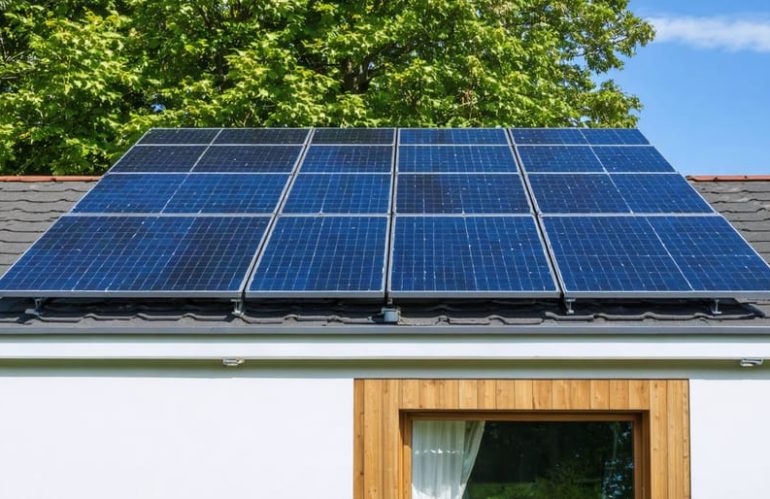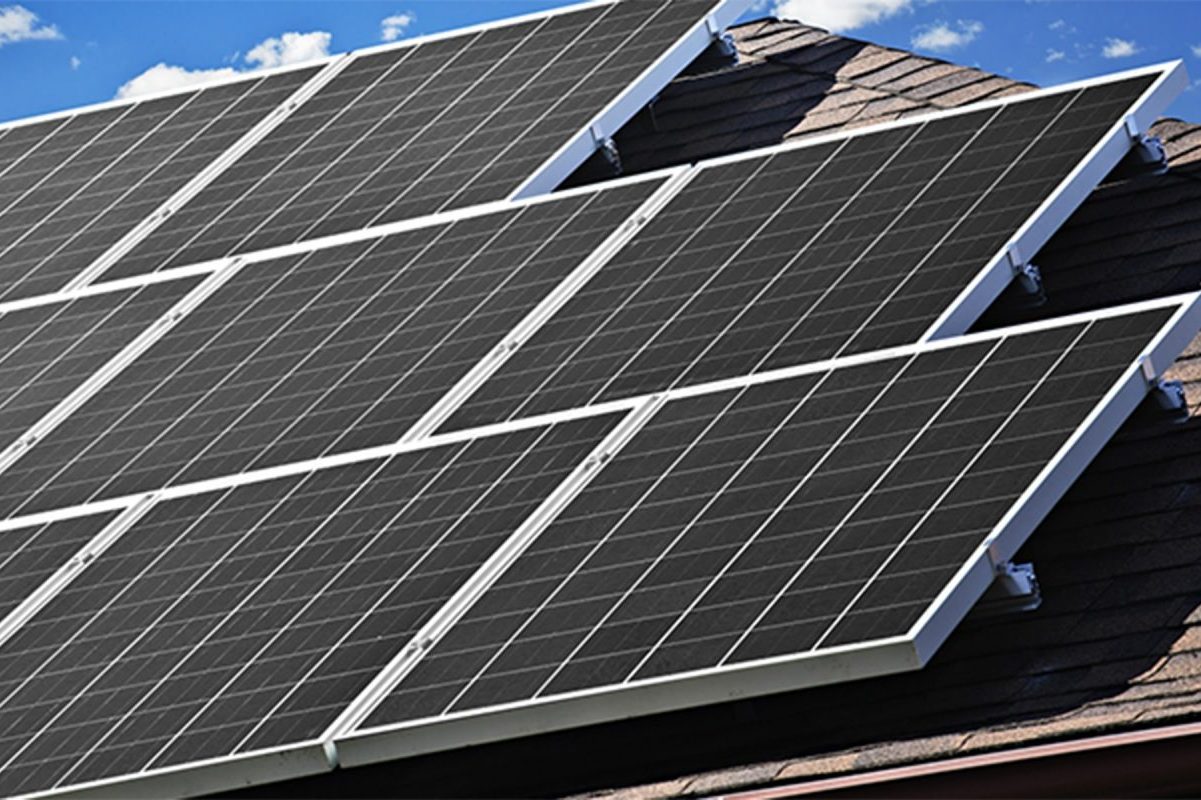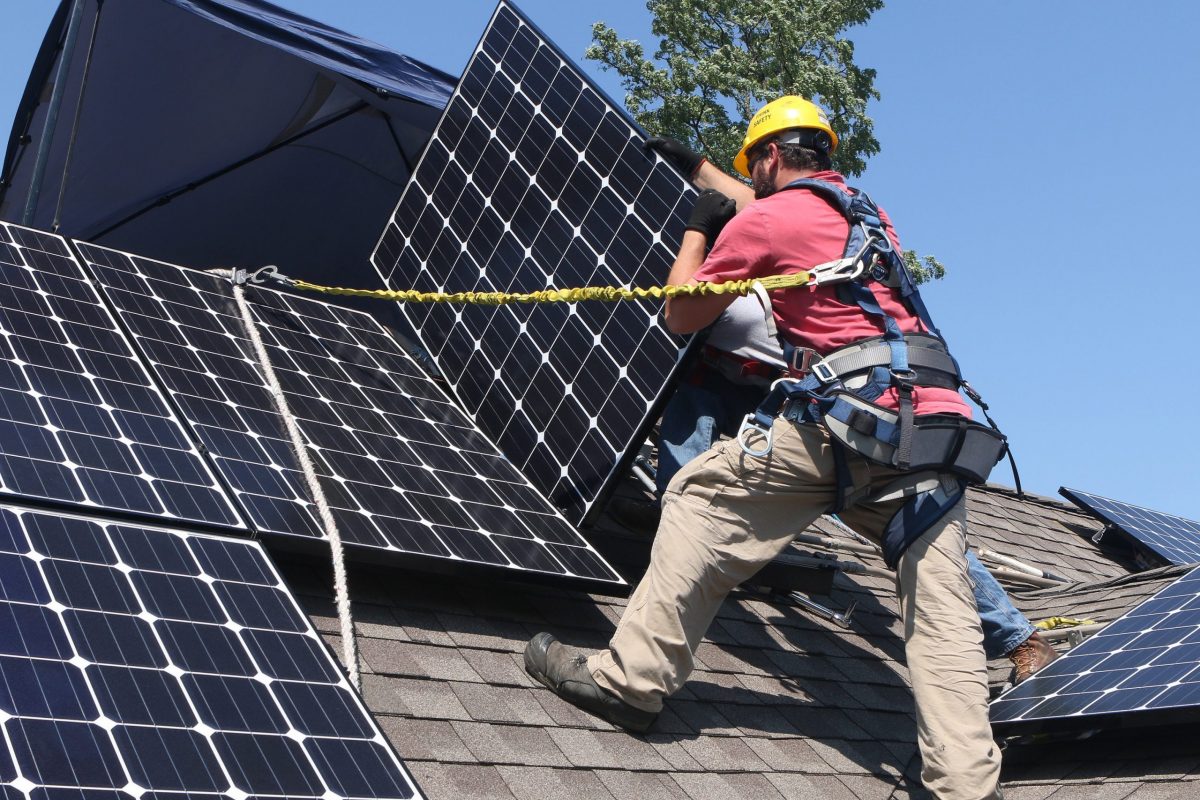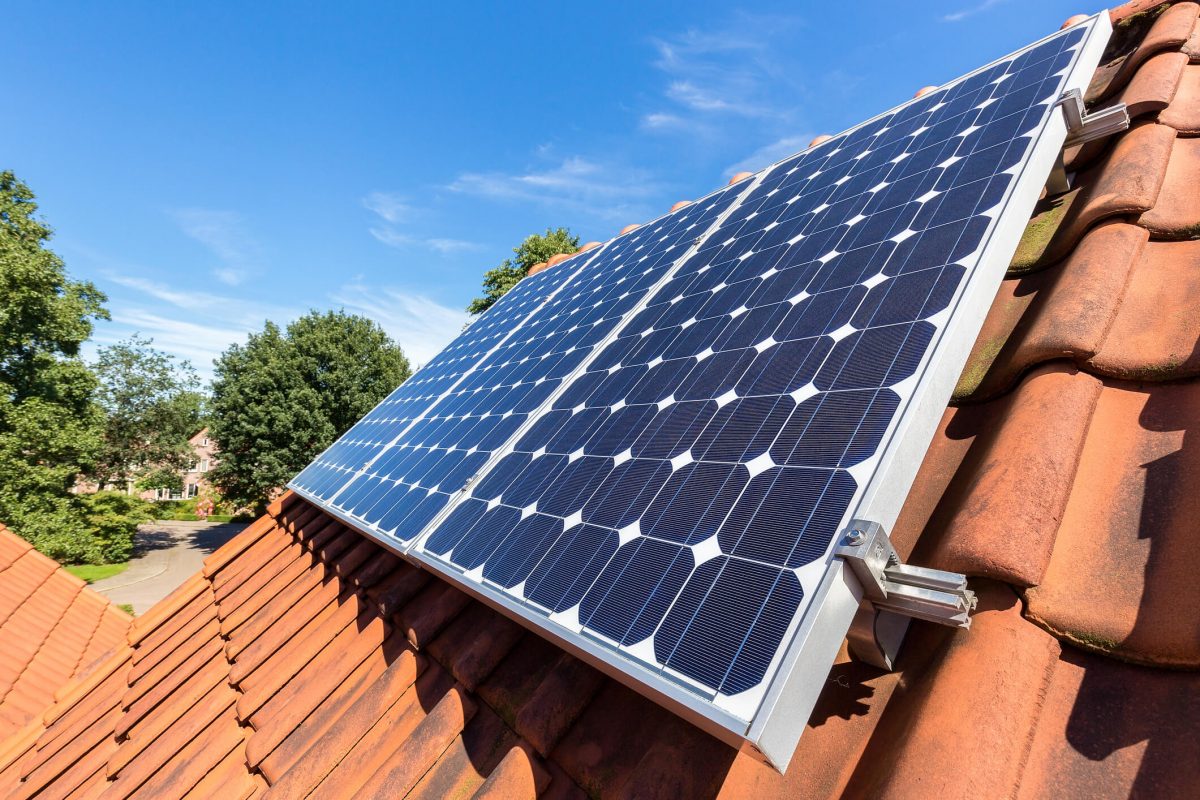Transform your home’s energy profile with a solar water heating system – a smart investment that typically pays for itself within 4-7 years while reducing your carbon footprint by up to 50%. These efficient systems capture free solar energy to heat your household water, slashing your monthly utility bills by 50-80% and providing reliable hot water even during cloudy days.
Installing a solar water heating system represents a significant step toward energy independence and sustainable living. Modern systems integrate seamlessly with existing plumbing, require minimal maintenance, and can last over 20 years with proper care. Whether you’re motivated by environmental concerns or seeking long-term cost savings, solar water heating offers a practical solution that combines advanced technology with simple operation.
As utility costs continue to rise, investing in solar water heating not only protects against future price increases but also increases your home’s value. Many regions offer tax incentives and rebates that can reduce initial installation costs by 30% or more, making now an ideal time to switch to solar. This guide will walk you through everything you need to know about choosing, installing, and maintaining a solar water heating system that meets your household’s needs.
How Solar Water Heating Systems Work
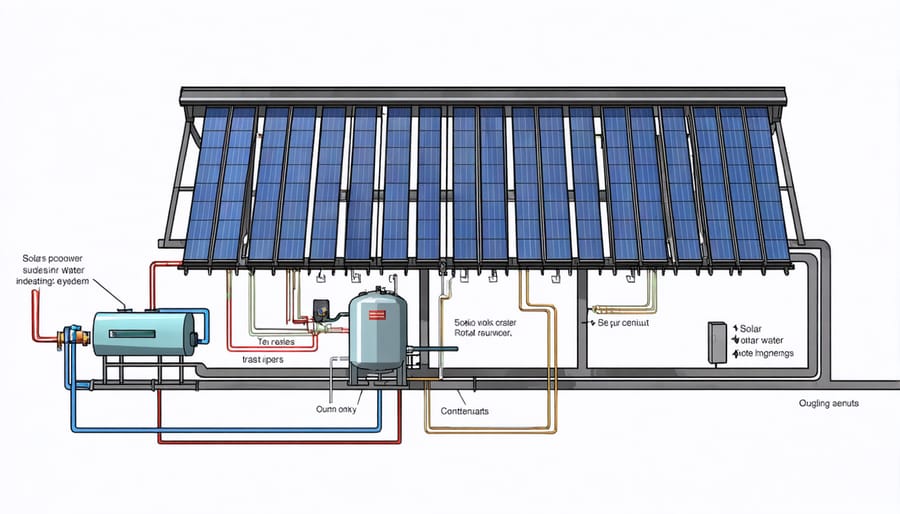
Direct vs. Indirect Systems
Solar water heating systems come in two main varieties: direct and indirect systems, each suited for different climates and needs. Direct systems, also known as open-loop systems, circulate household water directly through the solar collectors. These systems are most effective in warm climates where freezing temperatures are rare, making them ideal for locations like Florida, Hawaii, or Southern California.
Indirect systems, or closed-loop systems, use a heat-transfer fluid (usually a non-toxic antifreeze solution) to collect solar heat and transfer it to your household water through a heat exchanger. This design prevents freezing in colder climates and is the preferred choice for most U.S. locations that experience winter temperatures below freezing.
For year-round efficiency, indirect systems typically offer more reliable performance and require less maintenance than direct systems. However, direct systems are generally less expensive to install and maintain due to their simpler design. When choosing between the two, consider your local climate, budget, and long-term maintenance preferences. A qualified solar installer can help you determine which system type best suits your specific situation.
Key Components Explained
A solar water heating system consists of three main components working together to harness the sun’s energy. Solar collectors, typically mounted on your roof, are the heart of the system. These panels absorb sunlight and convert it into heat, warming the fluid inside. You can choose between flat-plate collectors, which look similar to solar panels, or evacuated tube collectors, which are more efficient in colder climates.
The storage tank is where your heated water is kept until needed. These insulated tanks are designed to maintain water temperature, ensuring you have hot water even after sunset. Most systems use a dual-tank setup: one for solar-heated water and another containing a conventional backup heater for cloudy days.
The control system, often called a controller, acts as the system’s brain. It monitors temperatures in the collectors and storage tank, automatically activating pumps to circulate fluid when conditions are right. Modern controllers feature user-friendly displays showing system performance and often include freeze protection for colder regions. Some even offer smart home integration, allowing you to monitor your system from your phone.
Installation Process and Requirements
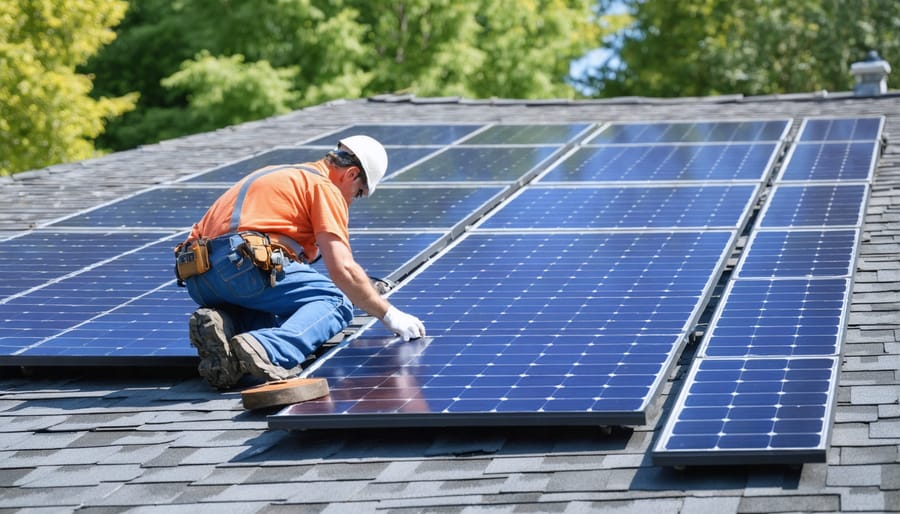
Site Assessment
A successful solar water heating installation starts with a thorough site assessment. The most crucial factor is your roof’s solar exposure – ideally, you’ll want an unobstructed south-facing area that receives direct sunlight for most of the day. Take note of any nearby trees, buildings, or other structures that might cast shadows on your roof.
Your roof’s condition and structure also matter significantly. The surface should be strong enough to support the collectors and mounting hardware. Most systems add about 2-4 pounds per square foot when filled with water. Consider the roof’s angle as well – optimal tilt angles typically range between 30-45 degrees for maximum solar collection.
Available space is another key consideration. A typical residential system requires 50-80 square feet of collector area for a family of four. Don’t forget to account for space needed for storage tanks and piping. Your local climate plays a vital role too – areas with frequent freezing temperatures may require specific system types and additional protective measures.
Finally, check local building codes and HOA restrictions before proceeding with installation planning. Some areas have specific requirements for solar installations.
Integration with Existing Systems
Integrating a solar water heating system with your existing home energy infrastructure is a straightforward process that can significantly enhance your home’s efficiency. Most modern solar water heaters are designed to work alongside your current water heating system, creating a hybrid setup that ensures reliable hot water year-round.
The integration typically involves connecting the solar storage tank to your existing water heater, which acts as a backup when solar energy isn’t sufficient. This arrangement allows your conventional water heater to supplement the solar-heated water only when necessary, maximizing energy savings while maintaining consistent hot water availability.
For homes with traditional tank-style water heaters, the solar system can be connected in series, where solar-heated water feeds into your existing tank. This preheating method reduces the workload on your conventional heater, resulting in lower energy consumption. If you have a tankless water heater, the integration process involves installing a tempering valve to regulate water temperature and ensure optimal performance.
The system’s controls are typically integrated with your home’s electrical panel, and temperature sensors are installed to monitor and manage water flow between the solar collectors and your existing setup. Modern smart controllers can automatically switch between solar and conventional heating based on available sunlight and hot water demand.
Before installation, your contractor will assess your current plumbing configuration and recommend the most efficient integration method for your specific situation. This might include adding isolation valves, pressure relief valves, and anti-scald devices to ensure safe and efficient operation of the combined system.
Benefits and Cost Savings
Energy Bill Reduction
Installing a solar water heating system can significantly reduce your home heating costs, with most homeowners seeing a 50-80% decrease in their water heating expenses. For a typical family of four, this can translate to annual savings of $300-$600, depending on your local utility rates and hot water usage patterns.
The initial investment for a solar water heating system typically ranges from $3,000 to $8,000, but various federal, state, and local incentives can reduce this cost substantially. Most systems pay for themselves within 4-8 years, offering an excellent return on investment. To maximize solar energy savings, consider that a well-maintained system can last 20+ years, providing free hot water long after the initial investment is recovered.
When factoring in rising energy costs and available tax incentives, the long-term financial benefits become even more attractive. Many homeowners report additional value to their property, with solar water heaters being an increasingly desirable feature for potential buyers.
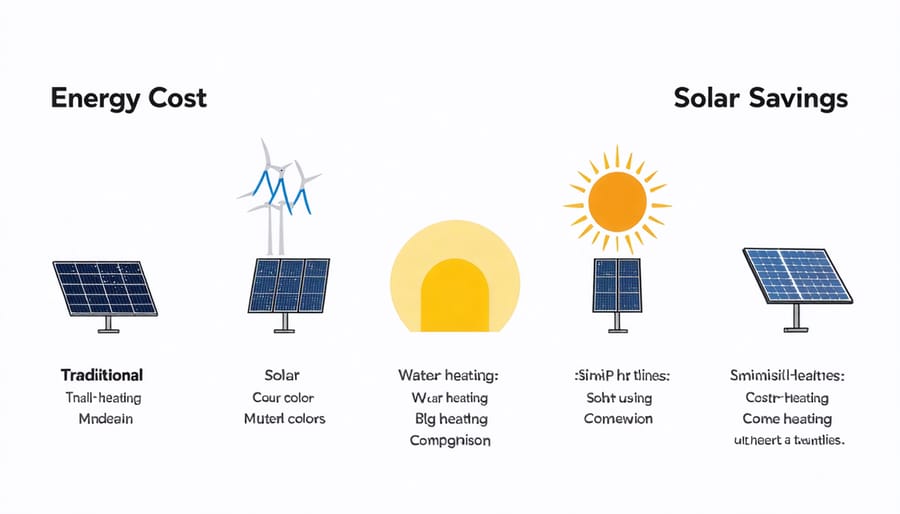
Environmental Impact
Installing a solar water heating system significantly reduces your household’s carbon footprint and environmental impact. The average system can prevent approximately 1.5 to 2 tons of carbon dioxide emissions annually – equivalent to taking a car off the road for six months. By harnessing the sun’s energy instead of relying on fossil fuels, you’re making a substantial contribution to fighting climate change.
These systems are remarkably sustainable, with most components lasting 20-30 years and being largely recyclable at the end of their life cycle. The energy used to manufacture the system is typically recovered within the first two years of operation, making it a genuinely green investment.
Beyond carbon reduction, solar water heaters help conserve natural resources by reducing dependence on non-renewable energy sources. A typical household can decrease its water heating energy consumption by 50-80%, depending on local climate conditions and hot water usage patterns. This reduction in energy demand helps preserve natural gas reserves and reduces the strain on electrical grids, particularly during peak usage times.
Additionally, unlike some other renewable energy technologies, solar water heaters have minimal impact on local ecosystems and don’t produce any noise or air pollution during operation.
Maintenance and Care
Regular maintenance of your solar water heating system ensures optimal performance and longevity. A well-maintained system can last 20 years or more, making it a worthwhile investment in your home’s future.
Start with monthly visual inspections of your system’s components. Check for any signs of damage, leaks, or loose connections in the collectors, pipes, and storage tank. Keep the collector panels clean by gently washing them with water and a soft brush when you notice dirt or debris accumulation. This simple step can improve efficiency by up to 10%.
Schedule professional maintenance annually to have a certified technician inspect your system thoroughly. They’ll check the heat transfer fluid levels, test pressure relief valves, and ensure all components are functioning correctly. During these checkups, they can also assess the insulation quality of your pipes and storage tank, which is crucial for maintaining system efficiency.
Monitor your system’s performance regularly through its control panel. Unusual changes in water temperature or pressure could indicate potential issues that need attention. Keep records of maintenance activities and system performance to track any patterns or changes over time.
In colder climates, take extra precautions during winter. Ensure your freeze protection mechanisms are working properly, and consider draining the system if you’ll be away during freezing weather. Check weather stripping and insulation around outdoor components to prevent heat loss.
By following these maintenance guidelines, you’ll maximize your system’s efficiency, prevent costly repairs, and ensure a reliable supply of hot water for years to come.
Installing a solar water heating system is a smart investment that pays dividends in both environmental impact and long-term cost savings. As we’ve explored, these systems can significantly reduce your energy bills while providing reliable hot water throughout the year. With proper installation and maintenance, you can expect your system to operate efficiently for 20 years or more.
The benefits are clear: lower utility costs, reduced carbon footprint, increased home value, and potential tax incentives. While the initial investment may seem substantial, the long-term savings and environmental impact make it a worthwhile consideration for any homeowner looking to embrace sustainable living.
Ready to take the next step? Consider scheduling a professional consultation to assess your home’s suitability for solar water heating. A qualified installer can evaluate your specific needs, recommend the right system size, and provide a detailed cost analysis. They’ll also ensure your installation meets all local building codes and requirements.
Don’t wait to start saving on your energy bills and contributing to a greener future. Contact a certified solar installer today to begin your journey toward sustainable water heating.

